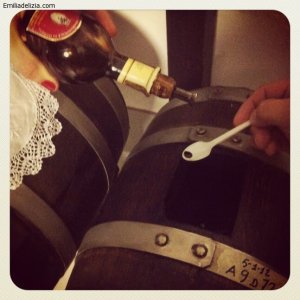Grappa is the perfect ending to yet another delicious Italian meal! This venerable digestive has been produced and enjoyed in Italy for centuries; it was mentioned in 14th Century documents and by the end of the 15th Century it was already licensed, taxed and exported – yes, even way back then the Tax Man was quick to recognise the potential and grab his share! Although Grappa had humble origins – it was widely produced in home stills by just about every wine farmer and grape producer in the North of Italy – it has come a long way since it’s rather rough-and-ready high potency origins and today Grappa is enjoyed all over the world and some of the better Grappa can be a most sophisticated ending to an enjoyable meal.

What is Grappa?
Grappa is made from pomace, the left-over skins, seeds, and stems that remain after grapes have been crushed for wine. Sometimes fruit or other aromatics such as fresh herbs and spices are added to this raw material before it is distilled using either the old fashioned direct-fired stills or more modern methods utilizing steam heating. The distillate is a clear liquid with a hefty alcohol content of around 37% to 40% (and often higher, especially home-made varieties that are not subject to control). A similar product is also produced in France, called Marc, but the name “Grappa” may only be used for those spirits originating in Italy, and there are various regulations controlling the alcohol content (it cannot be less than 40%), distillation process and the grapes used. The resulting distillate is crystal clear and completely colourless.
The big players in the grappa business.
Today there are several enterprising Italian producers, among them some big names like Nardini (Bassano del Grappa) and Nonino in the Friuli Region, who have started to promote and refine the end product. Instead of using whatever grapes are available, (traditionally the old Grappa was made from a mixture of wine-grape remnants) they have started to produce single variety Grappa (cru monovitigno) and Grappa made from the grapes of particular denominated areas. In addition, some producers are aging the distillate in oak, ash or chestnut barrels, which imparts subtle flavours of vanilla, tobacco and sweet spices as well as changing the colour to anything from a light straw to a deeper amber hue. Most of the larger wineries now have their own “house brand” grappa specially distilled for them to sell alongside their wine.
Further innovations to improve the image and desirability of Grappa include the wide-spread use of beautiful hand-blown glass bottles, some embellished with beautiful stoppers, a variety of seals, gold caps, ribbons and lace reminiscent of the more gracious Renaissance era.
How to enjoy grappa.
The best way to enjoy Grappa in the traditional way is to serve it in a small tulip-shaped glass which will enhance the aroma. Young Grappa should be served cool (around 9 – 13C) while older Grappa would best be enjoyed at room temperature (17C). Many Italians enjoy sipping a Grappa alongside their Espresso, or even combining the two.
In the last decade there has been a big increase in the popularity of Grappa, leading it to become quite fashionable. A “Grappa Movement” – (i Grappisti) has been formed to promote the drink and there have been competitions where “mixologists” compete to produce the best cocktail containing Grappa as the primary ingredient. For your own modern take on Grappa try this suggestion from British celebrity chef Jamie Oliver as the finale to your next dinner party: Put a bottle of Grappa and 2-3 bunches of grapes in the freezer for about 2-3 hours. Serve the chilled grapes and Grappa on a large platter with a few bars of good black chocolate – superb!
Grappa tours.
Emilia Delizia would be very happy to organise tours for those interested in the process of making this famous Italian Spirit. Typically produced in the North West of Italy, the producers are easily reached from Venice, Verona, Bologna and Milan. Our company can organise transport, visits and lunches. A minimum of 10 people is required.



![IMG_2734[1]](https://i0.wp.com/www.emiliadelizia.com/wp-content/uploads/2013/01/IMG_27341-e1357380178784.jpg?resize=448%2C600&ssl=1)

















